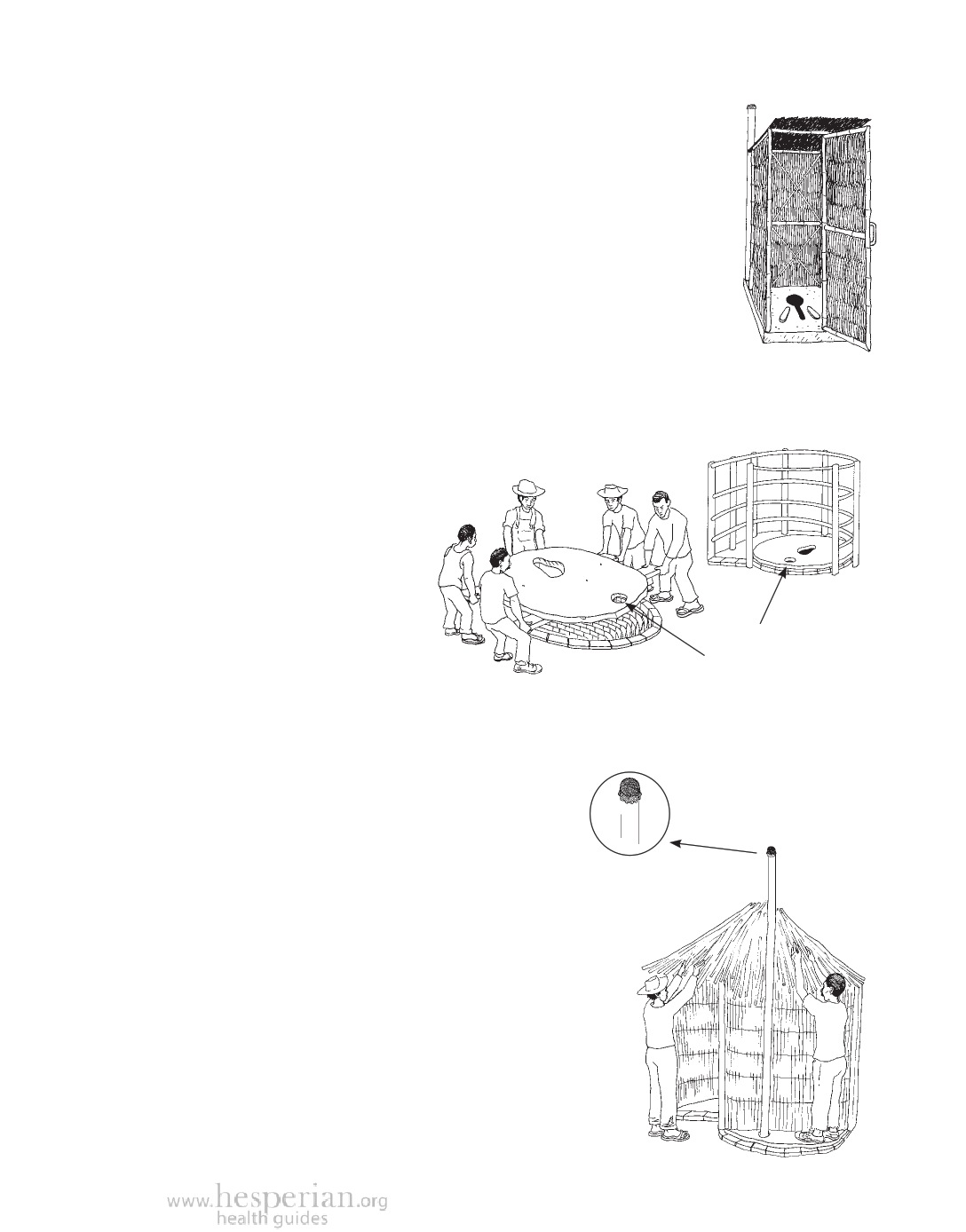
Toilet Choices 123
Ventilated improved pit toilets (VIP)
The VIP toilet is an enclosed pit toilet that reduces smells and flies.
How the VIP works
Wind blows across the top of the vent pipe and carries away
smells. The shelter keeps the toilet dark so the flies in the pit will
go toward the light at the top of the pipe, get trapped by a wire
screen, and die.
To make the VIP toilet
1. Dig the pit 2 m deep and 1½ m wide. Line the top with bricks or a
concrete ring beam sized to fit the pit (see page 122). If the shelter will be
very heavy (brick, concrete, or heavy wood), line the whole pit, except the
bottom. Leave gaps in the brickwork to let liquids out.
2. Make a platform (see page 121) 1½ m by 1 m, with
2 holes in it. The second hole,
near an edge of the platform,
is for the vent pipe. Make
the vent pipe hole no less
than 11 cm wide.
3. Build a shelter over the pit
and platform.
4. Fit a vent pipe at least 11 cm
wide tightly into the smaller hole.
Paint the vent pipe black to absorb heat and improve
ventilation. Cover the top of the vent pipe with a mosquito
Make the vent
pipe hole the
same size around
as the vent pipe.
screen (aluminum or stainless steel will last longest). Make the vent pipe
rise at least 50 cm above the roof so the wind can pull out bad smells.
To use and maintain a VIP toilet
• Keep the hole covered when not in use.
• Keep the shelter dark inside.
If the wire screen breaks
or comes off the pipe,
replace it at once.
• Keep the toilet clean and wash the platform often.
If the vent pipe gets blocked by spiderwebs, pour water down it.
VIP toilets can have these problems :
If the shelter is not dark enough, or if the hole is left
uncovered, flies will not fly up into the pipe. And
if the shelter has no roof, or if the screen breaks or
comes off the vent pipe, there is little fly control.
A Community Guide to Environmental Health 2012